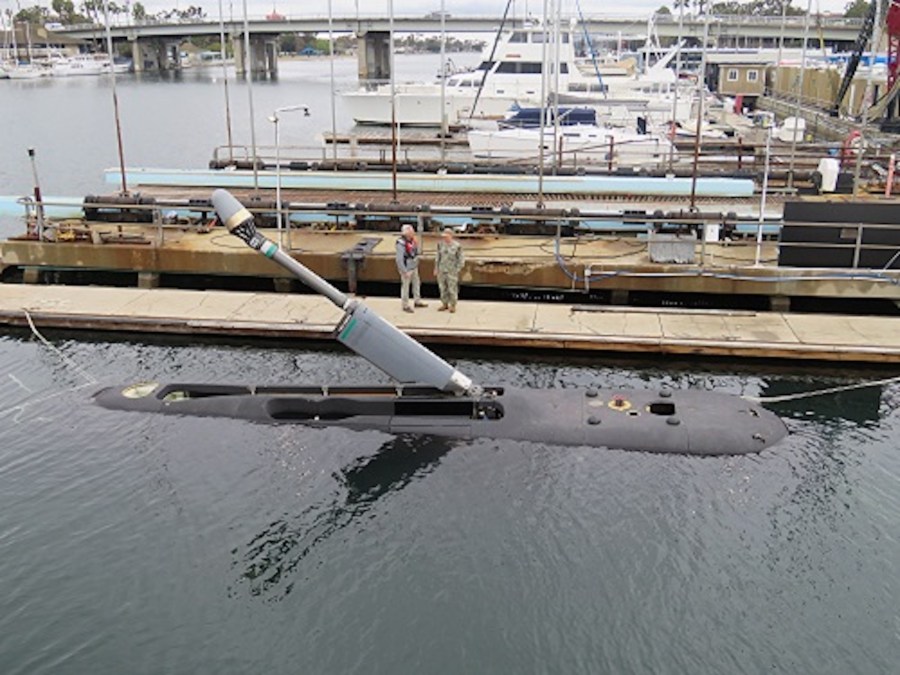JON HARPER

Boeing delivered the first Orca underwater drone to the Navy this month after a series of tests at sea, the company announced Wednesday.
The service is pursuing extra-large unmanned undersea vessels (XLUUV) that can travel long distances and lay mines without putting sailors in harm’s way. The initiative is part of a broader push to acquire new robotic platforms for the fleet. The Navy is also acquiring and deploying a variety of unmanned surface vessels and unmanned aerial systems.
In a press release, Boeing described Orca as “a new class of autonomous submarine that can perform long duration critical missions to achieve undersea maritime dominance in changing environments and contested waters.”
“This is the culmination of more than a decade of pioneering work, developing a long-range, fully autonomous undersea vehicle with a large payload capacity that can operate completely independently of a host vehicle,” Ann Stevens, vice president of maritime and intelligence systems at Boeing, said in a statement. “I’ve had the distinct pleasure of witnessing our team bring this first-of-its-kind capability to life, and I’m proud of their innovation, perseverance and unwavering commitment which has yielded the most advanced and capable UUV in the world. With the Navy’s partnership, we look forward to continuing to deliver this game-changing vehicle to the fleet.”
The Navy defines XLUUVs as unmanned underwater vessels with a diameter of more than 84 inches, according to a Congressional Research Service report.
In 2019, the Navy tapped Boeing to fabricate, test and deliver the first five Orcas. It’s part of an effort to address what the Pentagon calls a “joint emergent operational need.”
“Orca XLUUV is a multi-phased accelerated acquisition effort to rapidly deliver capability to the Fleet,” according to Navy budget documents. “Fabrication awards of additional Orca XLUUV systems are planned for [fiscal 2026] and out, gradually ramping up quantities in future fiscal years, depending on the progress from the first five systems. XLUUV will have a modular payload bay, with defined interfaces that current and future payloads must adhere to for employment from the vehicle.”
The initiative will integrate “the currently required payload, and potential future payloads will be developed, evaluated, and preliminarily integrated leveraging the Core Technologies Program Element 0604029N. Additional XLUUV technologies/capabilities risk reduction will occur in parallel, leveraging the competitive Industrial base,” per the documents.
The Navy requested $104 million for fiscal 2024 for advanced undersea prototyping for the effort.
Orca was put through its paces during multiple phases of at-sea testing, including above- and below-surface maneuvers, before the first system was delivered this month, according to Boeing.
No comments:
Post a Comment